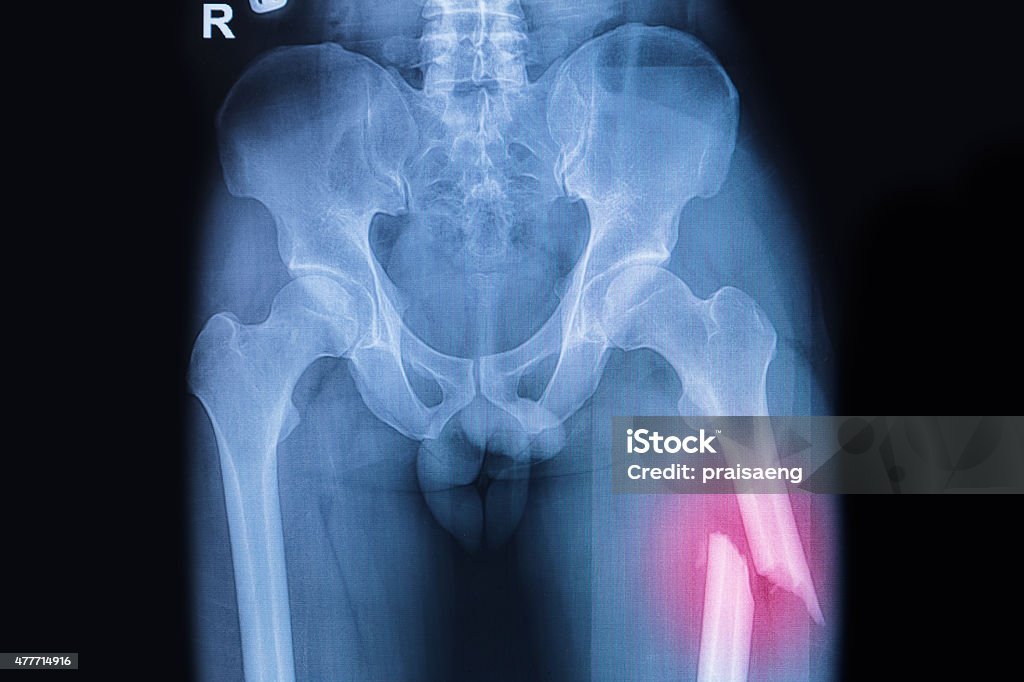fracture is a break in the surface of a bone , either across its cortex or through its articular surface
there are several types of fractures which include displaced un-displaced and open fractures
the most common reason for the fractures to occur is road traffic accidents (RTA) or falls or some pathological problems.

Fractured Femur
Orthopedic injuries encompass a wide range of problems starting from bone and joint injuries, strains and sprains and damage to associated neurovascular system
Dislocation : The joint experiences a complete and persistent separation, disrupting at least part of the supporting joint capsule and some of its ligaments.
subluxation : is a partial seperation of a joint
sprain : is a temporary subluxation of a joint and the articular surface return to its normal alignment. it is due to ligament tear
strain : is a tear in the muscle itself
types of fractures:
- simple
- compound
Simple fracture
simple fracture is the break within its soft tissue envolope and it does not communicate to the exterior
compound fracture
External forces can damage the soft tissues, resulting in a compound fracture that exposes the bone to the external environment.
classification
- transverse
- oblique
- spiral
- communited
- segmental
- hairline
- interarticular
- longitudinal
- pathological
- greenstick
- displaced
- impacted
- stress
extent of fracture
complete = It encompasses the entire bone, which may be displaced or undisplaced.
incomplete = it involves only one surface or cortex of the bone
clinical Features
a patient with limb injuries may present with the following complaints:
- Pain : This is very subjective symptoms and is invariably the first and the most important complaint. it may be mild, moderate, and severe and may be due to tearing of periosteum (which contains nerve endings), soft tissue injury, vascular injury, nerve injury, etc
- Swelling : It is due to soft tissue injury, medullary bleeding, and reactionary hemorrhage. swelling is usually more in fractures and less in dislocations for obvious reasons.
- Deformity : Patients with displaced fractures and dislocations usually present with deformity of varying severity.
- Inability : to use the affected part is another frequent complaint.
- Tenderness : This is an important clinical sign in bone and joint injuries and is usually seen after trauma.
- Crepitus : this is an abnormal grating sensation produced by the friction between two ragged surfaces of the fracture fragments. obviously, it is elicitable only in displaced fractures. it should be elicited very gently and at the end of the clinical examination.
- Shortening : limb shortening of various degrees is common in bone and joint injuries .
Management of fractures
The management of fractures can be through conservative methods, closed reduction or open reduction
the goal of fracture treatment is to restore the anatomy back to its normal or as near normal as possible,.
the responsibility of an orthopedic surgeon is to ensure that there is no functional disability to the patient.